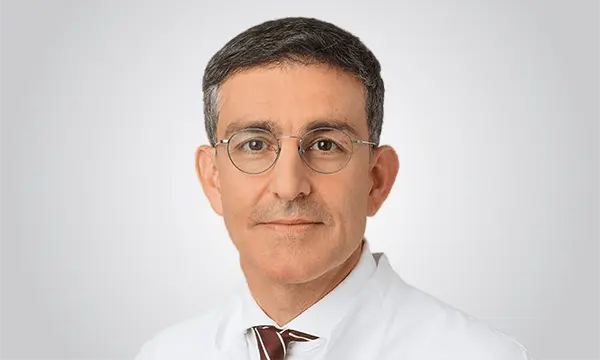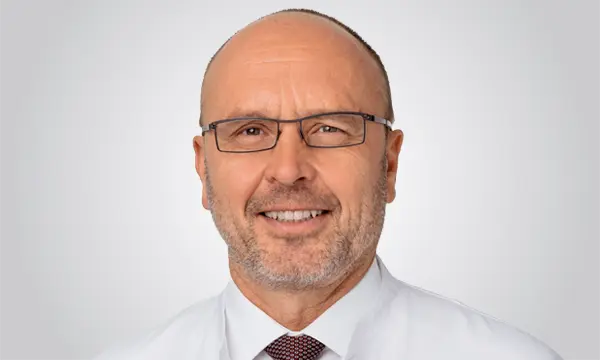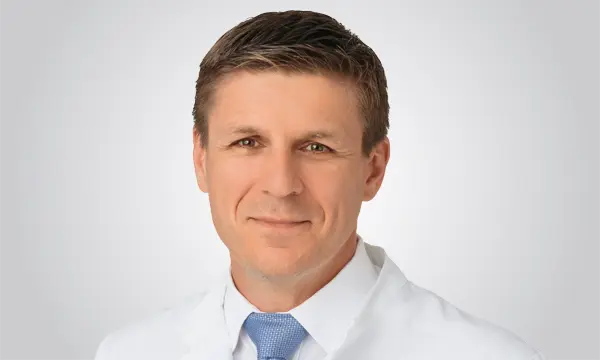Hip impingement describes a mechanical conflict, through which the normal motion play in the hip joint is disturbed and the femoral neck strikes the front rim of the socket. This leads to blocking of the hip during certain movements.
Definition
Femoroacetic impingement or hip impingement is an acquired malformation of the hip, which is one of the most common causes of coxarthrosis. The cause is bony attachments on the femur and/or on the acetabulum. Through these bony attachments impingement of the thigh bone and the bony margin occurs with movement especially during hip flexion. Repeated impingement repeatedly squeezes intervening structures such as articular cartilage and the cartilaginous lip (labrum).
Hip impingement describes a mechanical conflict, through which the normal motion play in the hip joint is disturbed and the femoral neck strikes the front rim of the cup. This leads to blocking of the hip during certain movements.
Possible causes are deposits on the femoral head in question which cause it to lose its round shape (CAM impingement). On the other hand, the acetabulum can also be twisted too much or unfavourably so that it extends too close to the joint. This disorder is also known as pincer impingement. A combination of both (so-called mixed impingement) is the most common cause. The changes in shape described cause the transition from the femoral head to femoral neck to strike the joint socket and the labrum running around the socket (joint lip). The more often such an impact occurs and the higher the speed and force involved (in certain sports, stooping, working while sitting, driving), the sooner the articular cartilage and/or the rim or the labrum are damaged. This causes the joint to become inflamed and causes pain. Over time, this mechanism can lead to hip arthrosis.
Symptoms
Similar to osteoarthritis, patients with hip impingement complain of hip pain in the groin area (at the front and at the side of the hip joint), which occurs initially especially during and after exercise. Deep sitting can also trigger the typical pain. Patients also often notice limited mobility of the hip joint. Later sufferers complain of severe pain during prolonged sitting and walking short distances. Blockage is already clearly noticeable at this stage.
Diagnosis
In addition to the medical history (anamnesis) a physical examination is important at the start. During the examination, the doctor will perform a so-called provocation test. Two movements are performed simultaneously, which causes the typical groin pain. If the suspicion is confirmed, an X-ray is taken to see if the symmetry between the femoral head and the socket is present. Bony elevations are also clearly visible on the x-ray. For more detailed imaging of the soft tissues, a CT would be the method of choice.
Conservative treatment
Conservative therapy aims to alleviate hip pain and favourably influence the further course of the disease. Physiotherapeutic treatment to improve mobility is used in particular. Drug and anti-inflammatory treatment is also advised. Electrotherapy can also relieve the initial symptoms. Since this is a “mechanical problem” surgery is necessary in most cases.
Surgical treatment
If pain already exists while sitting and large bony attachments are present, they cannot be remedied through exercise but only removed by a hip operation. This can usually be done by an experienced hip specialist in a minimally invasive manner using keyhole surgery (hip arthroscopy). Hip arthroscopy is a relatively new surgical procedure. The most common disease in which hip arthroscopy is performed is hip impingement.
With arthroscopy, the exact extent of the damage can be determined and, if possible, corrected immediately during the exploration. As part of this procedure, a joint lip can be re-attached to the socket edge, a deformed condyle, socket or femoral neck removed and adapted or a femoral neck can be re-modelled. The aim is that after treatment pain-free movement of the joint will be possible again, and the degeneration processes, which were caused by the impingement of the hip joint, are slowed down or prevented.
Hip arthroscopy is performed on a so-called “extension table” in the supine position. Access to the joint is via 2-4 small cuts on the thigh of about 1 cm in length. A camera and the respective working tools are then introduced. Now, the structures of the hip can be viewed and treated under 2.3x magnification. The operation takes between 30 and 90 minutes.
Rehabilitation – Time and methods
The rehabilitation depends on whether bone has been removed during hip arthroscopy or if cartilage damage has been treated. If this is the case, only a partial load is initially recommended. Waling aids are then recommended for about 10 days. Walking training, stair climbing etc. are incorporated as soon as possible in the rehabilitation program. The aim of the physiotherapeutic treatment is also to correct the improper stress levels arising due to the restriction in movement over the past months and years. Hip-friendly sports such as swimming or cycling can be resumed as early as 6 weeks after surgery.




































